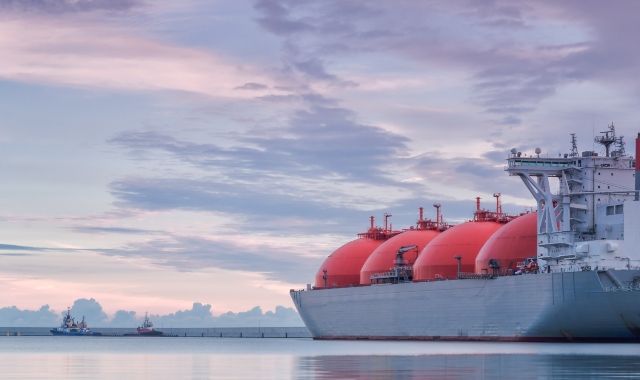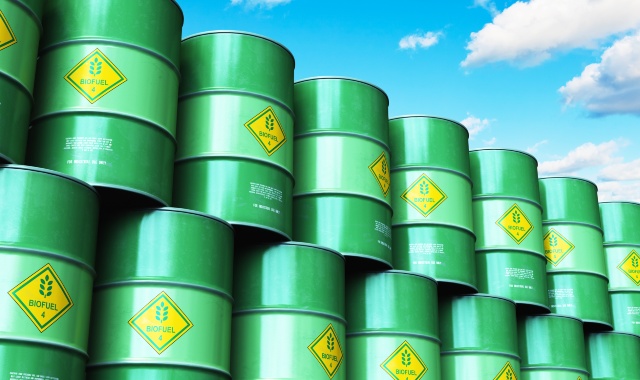Eco-Friendly Ferry Travel: Protect the Environment While on Holiday
How traveling by ferry can contribute to sustainable tourismThe protection of the ecosystem is a major issue of concern for contemporary societies. New and innovative eco-friendly practices are constantly being implemented in order to contribute to environmental sustainability. Significant steps and measures are being taken in the ferry industry in an effort to make ferry travel greener.
The team of Ferryhopper supports these initiatives and presents some interesting facts regarding environmental sustainability and ferries.
On this page
What fuel do ferries mainly use?
Ferries used to burn coal as fuel. Starting from the 30s, coal-based engines were gradually eliminated and replaced by heavy fuel oil engines. Today, the main types of fuel that are used in ferries are:
- Heavy Fuel Oil (HFO): also known as ”bunker fuel’’, it is the most common type of fuel for passenger and cargo ferries. It is widely used due to its lower price compared to other types of clear fuel. However, it is the least environmentally friendly as its combustion emits higher volumes of toxic products such as sulfur, nitrogen and carbon oxides.
- Marine Diesel Oil (MDO): unlike HFO, which is the residual of crude oil distillation, Marine Diesel Oil consists of distillates and a small amount of HFO. Simply put, it is much clearer and more eco-friendly than pure heavy-fuel oil. Moreover, MDO can have different sulfur amount levels. The most well-known is the low sulfur fuel oil (LSFO) with 0.10%-0.50% sulfur content. Unfortunately, it is more expensive than HFO and for that reason, it is not as common as the latter.

How can a ferry be eco-friendly?
As the problems of global warming and environmental pollution escalate, ferry companies are trying to come up with solutions and technologies that will make their fleets more sustainable.
Which are the new eco-friendly fuels for ferries?
Eco-friendly fuels that give off fewer greenhouse gases play a key role in reducing air pollution caused by ferry traveling.
- Liquefied Natural Gas (LNG): recently, Liquefied Natural Gas (LNG) has started to be used as a fuel in ferries. It is a non-toxic liquefied fossil fuel that mainly contains methane (hydrocarbon) and significantly reduces CO2 emissions in comparison to diesel. Its cost depends on the price of the natural gas, the liquefaction and the transportation.
- Ultra-Low Sulfur Fuel Oil (ULSFO): since 2015, Marine Gas Oil (MGO) has been trying to make its way into the ferry industry. It is a type of fuel consisting solely of distillates of crude oil and its sulfur content is max 0.10%. Until now, it has mainly been used in auxiliary engines. Even though the emissions of this fuel are considerably lower, its price is almost double than that of HFO.
- Biofuels: one of the most prominent means of reducing the carbon footprint of ferries is biofuels like biodiesel. Biofuels are derived from biological waste mainly from agriculture and depending on the type of biofuel used, CO2 emission can be reduced by 80-90%.
All the information on the types of fuels is taken from the website of Marquard & Bahls company, which is active in the energy and chemical sector.

Are there other means of making ferries more eco-friendly?
Apart from opting for more environmentally-friendly types of fuel, ferry companies have been making an effort to equip their vessels with new technologies that can save up energy and restrict water and air pollution:
- Technologically advanced engines: filters, combustion engines, propulsion engines, propellers and hull coatings.
- Electricity consumption: marine solar panels, energy-saving LED lighting, energy-efficient motors.
- Water waste: biological treatment of sewage waters, filters for greywater, non-toxic cleaners, treatment of water waste from machinery.
- Solid and plastic waste: recycling, management of cargo residues, introducing ‘’e-tickets’’ in order to reduce plastic ferry tickets.
Recent studies and practices are generally focusing on the maritime circular economy. This means that ferry companies and research facilities are trying to find ways to reuse waste in order to make ferry travel more sustainable.
Eco-friendly ferries: Conventional vs high speed
Research has shown that slower vessels emit less exhaust gas compared to high-speed ones. According to Oceana, even a 20% reduction in ferry speed can lead to a 50% reduction in air pollutants.
However, ferry companies are constantly coming up with and implementing new technologies, such as LNG engines in high-speed vessels in order to make them more eco-friendly. In conclusion, the golden rule of saving fuel is going slower!

Case Study: Traveling from Greece to Italy by car, airplane or ferry
It would be interesting to compare the energy footprint of these 3 means of transport on a route such as Greece - Italy. We have chosen Athens as the departure point and Venice as the destination.
The results below are calculated according to official data from the British Department for Business, Energy and Industrial Strategy (BEIS) and the European Environment Agency.
- Greece - Italy by car: according to Google Maps you will have to travel about 1856 km across the Balkans to reach Venice from Athens. The average consumption for 4-passenger cars is around 0.12 kg CO2/km. Therefore, we multiply 1856 km x 0.12 kg CO2/km and divide it by 4 passengers. The final result is = 55.86 kg CO2 per passenger.
- Greece - Italy by airplane: the distance between Athens and Venice in a straight line is around 1270 km. According to BEIS, the average CO2 emission is 0.18 kg per passenger which translates to 1270 km x 0.18 kg = 228.6 kg CO2 per passenger.
- Greece - Italy by ferry: in order to reach Venice from Athens, you have to drive 490 km to Igoumenitsa first. The distance between the port of Igoumenitsa and the port of Venice is approximately 925 km (500 nautical miles). Thus, the car ride emissions equal 14.1 kg CO2/km per passenger (490 km x 0.12 kg CO2/ km = 56.4 kg CO2, divided by 4 passengers). For the ferry ride, emissions are 925 km x 0.11 kg CO2/ km = 101.75 kg CO2 per passenger. The sum is 115,85 kg CO2 per passenger.
According to the calculations above, traveling by ferry is much more environmentally friendly compared to traveling by airplane. Even though cars emit less CO2 than ferries, it is important to note that in our calculations we didn't include factors such as other kinds of toxic emissions, prices, tolls and human fatigue.

Which ferry companies have eco-friendly vessels?
Some European ferry companies that are using new technologies aimed at environmental sustainability are:
- Baleària: this is a ferry company that serves ferry routes from mainland Spain, and has already added 4 vessels equipped with eco-friendly technologies to its fleet.
- Trasmapi: as a Spanish ferry company offering routes from Ibiza to Formentera, it participates in the Be Blue Formentera project to promote marine sustainability.
- Naviera Armas: it belongs to the largest Spanish ferry company group that takes part in the Plastic Free Project in order to completely eliminate the use of plastic.
- Trasmediterránea: it's also a member of the above-mentioned ferry company group that promotes zero-plastic use.
- Fred Olsen Express: this is one of the ferry companies that operate in the Canary Islands. It uses low-sulfur fuel oil and recycles solid and water waste.
- Brittany Ferries: the British ferry company that connects the UK to Spain has a strong environmental policy for their vessels, while it also tries to raise awareness for sustainable tourism.
- Superfast Ferries: it serves the Greece - Italy ferry routes and tries to implement recycling practices and reduce its fleet’s carbon footprint.
- Grimaldi Lines: it's one of the largest Italian ferry companies that aim for zero emissions in ports.
- Grandi Navi Veloci: this is another well-known Italian ferry company that uses LNG as fuel for its vessels.
- Corsica Ferries: this ferry company that mainly offers routes to Corsica and Sardinia strongly supports ecotourism not just with the use of technology but also as a lifestyle. It promotes the Corsica Ferries Forest project as well.
- Liberty Lines: this Italian ferry company operates many connections between Sicily and nearby islands with its 2 hybrid high-speed ferries, Vittorio Morace and Cristina M.
- Stena Line: this Swedish ferry operator works hard on providing a future with carbon neutrality and fossil-free vessels.
And remember: it's not only about the means of transport you choose. It's also about the footprint you leave behind during your holiday. Check out 7+1 examples of sustainable activities in the Greek islands and find ideas about how to travel in the most eco-friendly way.